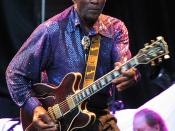The book "My Face Is Black Is True" goes into great detail about the biggest reparation movement in history and all the people involved in it, especially Callie House. Unlike many books, that only focus on main events and skip a lot of details that may help the readers understand the meaning, this book all the gory details. In fact, this book could very well be a textbook, instead of getting the reader to become intimate with Callie House, it provides historical information to its readers from a third person point of view. Even though this element makes the book more difficult to read, it also strengthens it as a whole. The author includes many historical events that were happening concurrently. This approach allows the reader to understand why many things happened the way they did and get a better idea of what influenced the actions of Callie House and the others in the movement.
First of all it is important to know who Callie House is. She was a black woman who was born into slavery on 1861 in Rutherford County near Nashville, Tennessee. She had three siblings: William, Annie, and Charles from oldest to youngest respectively. The exact date she and her siblings were born is not clear because it was not recorded as most slaves weren't. The year she was born was the year that the Civil War started. When the war ended in 1865, and reconstruction was on its way, House was still a toddler; the date of her birth turns out to be a significant element in the role she plays. If she was born earlier she may have been able to make a bigger impact by lobbying for representation during reconstruction; if she was born later and stayed in slavery longer she...


